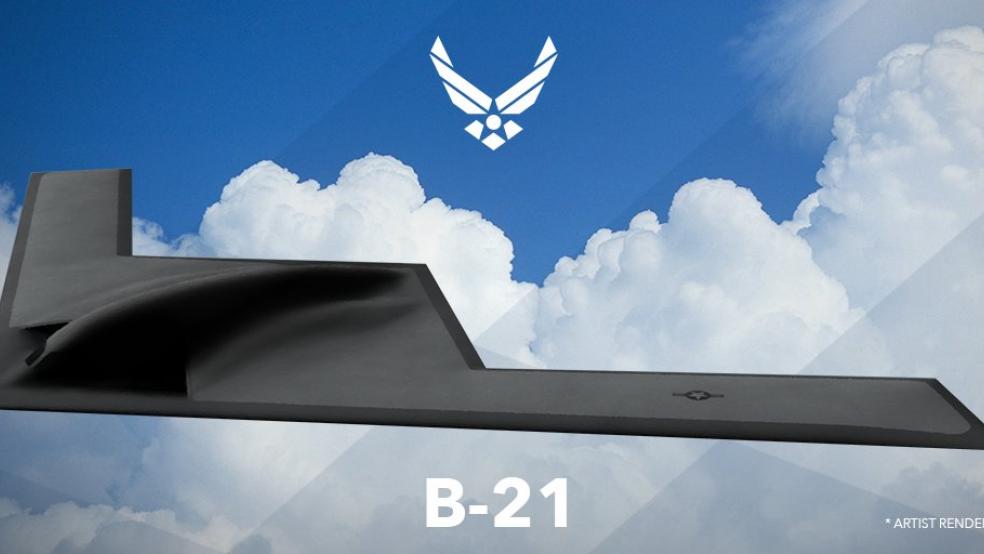A top Air Force official on Wednesday floated a potentially controversial scheme to pay for the service’s pricey next-generation bomber, one that could see the entire Defense Department fund the expensive effort.
The estimated $100 billion lifetime price tag for the nuclear-capable aircraft, recently designated the B-21, should be folded into a nuclear deterrence fund created to pay for the Navy’s next ballistic missile submarine fleet, Air Force Secretary Deborah Lee James suggested during a House Armed Services Committee hearing on Wednesday, according to Defense News.
Related: The Air Force’s New Bomber Gets a Name: Meet the B-21
James went further, suggesting that the cost of the replacement for the Minuteman III intercontinental ballistic missile (ICBM) should also be included in the currently Navy-specific account, formally known as the “National Sea-Based Deterrence Fund.”
That missile system, dubbed the Ground-Based Strategic Deterrent, is expected to cost more than $62 billion over its projected 30-year lifespan between fiscal years 2015 and 2044.
“If [there] is a strategic deterrence fund that would help or benefit one leg of the triad, I would ask for consideration that all legs of the triad be included in such an approach,” James told lawmakers.
The Navy wants to purchase 12 vessels to replace its existing force of 14 Trident Ohio-class ballistic missile submarines. Service officials have pegged the price tag of the next-generation nuclear submarine program, also known as the SSBN(X), at around $139 billion, with a lifetime cost of roughly $347 billion.
Related: The Navy Hunts for Its Next-Generation Nuclear Submarine
The fiscal 2015 defense policy bill authorized the creation of the special deterrence account for the submarine program. Some lawmakers believe that because the sub effort is so large and so expensive that it should be considered a “national” program and therefore funded from accounts throughout the Pentagon rather than strictly from Navy coffers, thus avoiding painful budget cuts to other service programs.
James’ comments suggest the Air Force may have come to the same conclusion about the B-21, especially after a think-tank report released last month warned of a coming “bow wave” in bills to the service budget in the 2020s, cresting at $232 billion in fiscal 2022, as the Air Force looks to modernize its portions of the nuclear triad as well as its fighters and tankers while still pursuing expensive weapons like the F-35 Joint Strike Fighter.
Related: How the Air Force’s New Planes Could Bankrupt the Pentagon
If the Air Force can get the rest of the Pentagon to chip in for the B-21, it would give the service some real budgetary relief.
But just because James suggested adding the bomber and missile to the deterrence account — thus expanding the size of its pot to over $500 billion — doesn’t automatically mean it’s going to happen. Congressional appropriators have shown discomfort over the deterrence fund, arguing that a special account sets a bad precedent and that the “national” tag could be slapped on other expensive weapon platforms, like the F-35.
Navy officials will want to weigh in on the suggestion, too, potentially sparking a turf battle between the two services as they look to modernize their arsenals.





